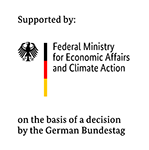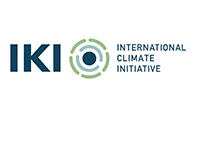Glossary
Annex B countries
Countries listed in Annex B of the Kyoto Protocol that have adopted a greenhouse gas emissions target. For the most part, these are the industrialized countries of the OECD and Eastern Europe. Under the Paris Agreement (2015), Annex B and A no longer exist.
BMU
German Federal Ministry for the Environment, Nature Conservation and Nuclear Safety
Caprolactam
A chemical compound utilized in nylon production, is a cyclic amide comprising six carbon atoms. Its polymerization yields nylon 6, a versatile synthetic material widely used in textiles, plastics, and various industrial products. Throughout the production process, N2O is emitted into the atmosphere. These emissions can be readily mitigated using a method similar to the N2O abatement process employed in nitric acid production.
CDM
see Clean Development Mechanism
CER
see Certified Emission Reductions
Certified Emission Reductions
Emission reduction certificate generated by CDM projects
Clean Development Mechanism
A flexible mechanism under the Kyoto Protocol. Its purpose is to assist Parties included in Annex I in achieving compliance with their quantified emission limitation and reduction commitments under the Kyoto Protocol, and to assist Parties not included in Annex I in achieving sustainable development through the implementation of climate mitigation projects that are finance by Annex I countries.
Cooperative Approaches
Mechanism provided for in Article 6.2 of the Paris Agreement whereby Parties can cooperate directly with one another in terms of mitigation outcomes. This makes it possible for emission reduction measures to be implemented in one country and the resulting emission reductions to be transferred to another and counted towards its NDC.
CO2eq
Carbon dioxide equivalent. The unit that translates the radiative forcing of any type of greenhouse gas into the amount of CO2 with the same greenhouse effect.
Emissions trading
One of the three flexible mechanisms under the Kyoto Protocol, by which an Annex I Party may transfer Kyoto Protocol units (AAU) to, or acquire units from, another Annex I party.
EU ETS
The European Union Emission Trading Scheme is a carbon credit trading system, built to support the European transition towards a low-carbon future. By capping the GHG emission allowances for the industry and power stations and allowing plant operators to trade remaining emission allowances, the system sets a price on excess GHG emissions and thereby raises abatement ambitions.
Global Warming Potential
An index representing the combined effect of the differing times greenhouse gases remain in the atmosphere and their relative effectiveness in absorbing outgoing infrared radiation. Carbon dioxide is taken as the gas of reference and given a 100-year GWP of 1.
HNO3
see Nitric acid
GWP
see Global Warming Potential
HNO3
see nitric acid
JI
see Joint Implementation
Joint Implementation
A mechanism under the Kyoto Protocol through which a developed country can receive „emissions reduction units“ when it helps to finance projects that reduce net greenhouse gas emissions in another developed country (in practice, the recipient state is likely to be a country with an „economy in transition”.)
Kyoto Protocol
The Kyoto Protocol is an international agreement linked to the United Nations Framework Convention on Climate Change. It commits its Parties by setting internationally binding emission reduction targets. Recognizing that developed countries are principally responsible for climate change, the Protocol places a heavier burden on developed nations under the principle of „common but differentiated responsibilities.“ It was negotiated in December 1997 at the city of Kyoto, Japan and came into force on 16 February 2005.
Mitigation and Sustainable Development Mechanism
A mechanism provided for in Article 6.4 of the Paris Agreement. The Mitigation and Sustainable Development Mechanism enables Parties to implement GHG mitigation activities, the results of which can be used towards fulfilling NDCs. The emission reductions achieved through the activity can either be used by the Party which implements the mitigation activity towards its NDC or by another Party. The MSDM is meant to be governed by a body under the UNFCCC.
Nationally Determined Contribution
Under the Paris Agreement, Parties are obliged to develop and communicate Nationally Determined Contributions that identify the national climate targets, including mitigation and adaptation, which countries commit to.
NDC
see Nationally Determined Contribution
Nitric acid
Nitric acid (HNO3) is a chemical which is mainly used for the production of synthetic fertilizers and explosives. Globally, an estimated 500-600 nitric acid plants are in operation. In the industrial production of nitric acid, ammonia (NH3) is oxidized over precious metal gauzes (primary catalyst) to produce nitrogen monoxide (NO) which then reacts with oxygen and water to form nitric acid.
Nitrous oxide
Nitrous oxide is a colourless non-flammable gas with the chemical formula N2O. The agricultural sector and industry are the main anthropogenic sources of nitrous oxide emissions. When released into the atmosphere N2O acts as a greenhouse gas and an ozone-depleting substance.
N2O
see nitrous oxide
ODA
Official Development Assistance. A specific type of financial assistance from one government to another. An official list by the OECD enumerates the low and middle income countries eligible for ODA.
Paris Agreement
A legally binding global agreement under the UNFCCC that deals with greenhouse gas emissions mitigation, adaptation and climate finance. The agreement was negotiated by representatives of 195 countries at the 21st Conference of the Parties to the UNFCCC in Paris and adopted by consensus on 12 December 2015. The agreement entered into force on 4 November 2016.
Project Design Documents (PDDs)
A Project Design Document is a key step in the development of a CDM project. The document lays out the structure, approach and practical implementation of a proposed CDM project.
Project Idea Notes (PINs)
A Project Idea Note gives a first overview over a proposed CDM project and presents its viability and potential.
Secondary abatement technology
Secondary abatement removes nitrous oxide through the installation of a secondary nitrous oxide destruction catalyst in the oxidation reactor.
Tertiary abatement technology
Tertiary abatement removes nitrous oxide from the tail gas through either thermal or catalytic decomposition.
UNFCCC
see United Nations Framework Convention on Climate Change
United Nations Framework Convention on Climate Change
A treaty signed at the 1992 Earth Summit in Rio de Janeiro that calls for the „stabilization of greenhouse gas concentrations in the atmosphere at a level that would prevent dangerous anthropogenic interference with the climate system.“ The treaty includes a non-binding call for developed countries to return their emissions to 1990 levels by the year 2000. The treaty took effect in March 1994.


